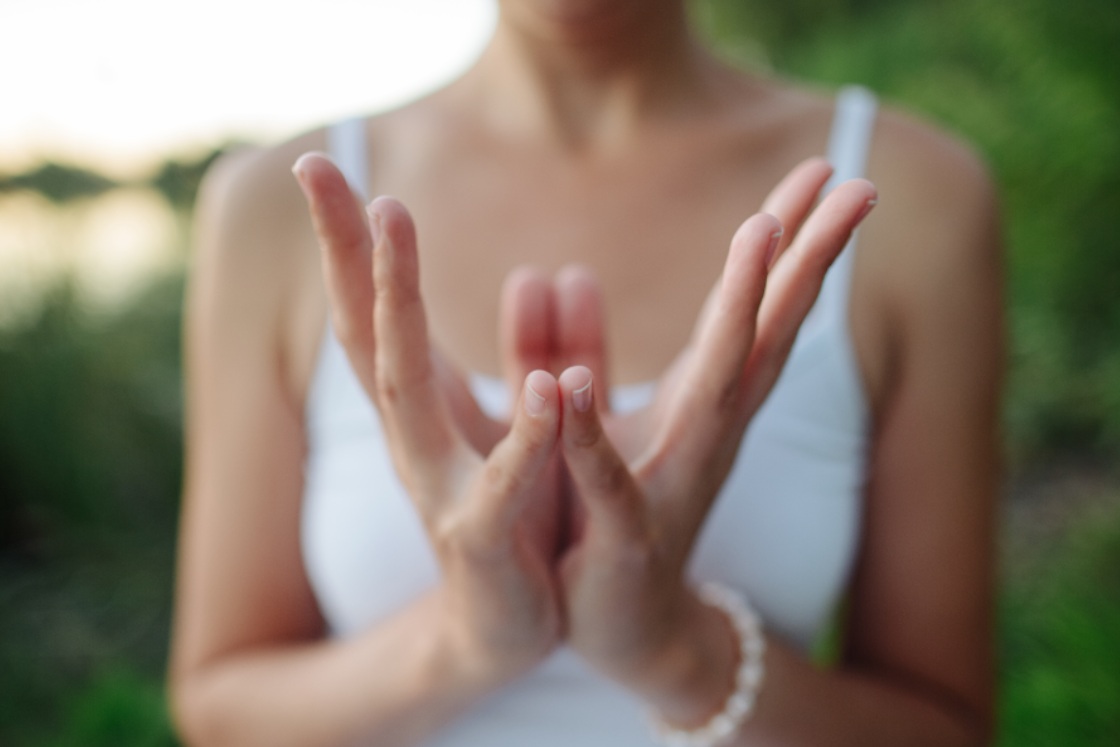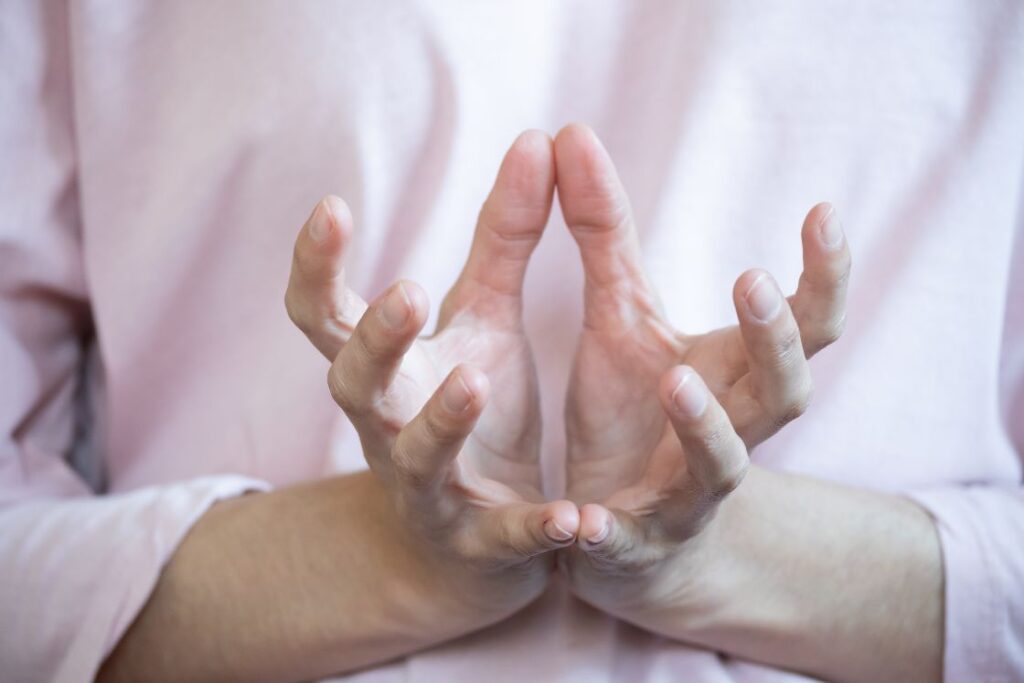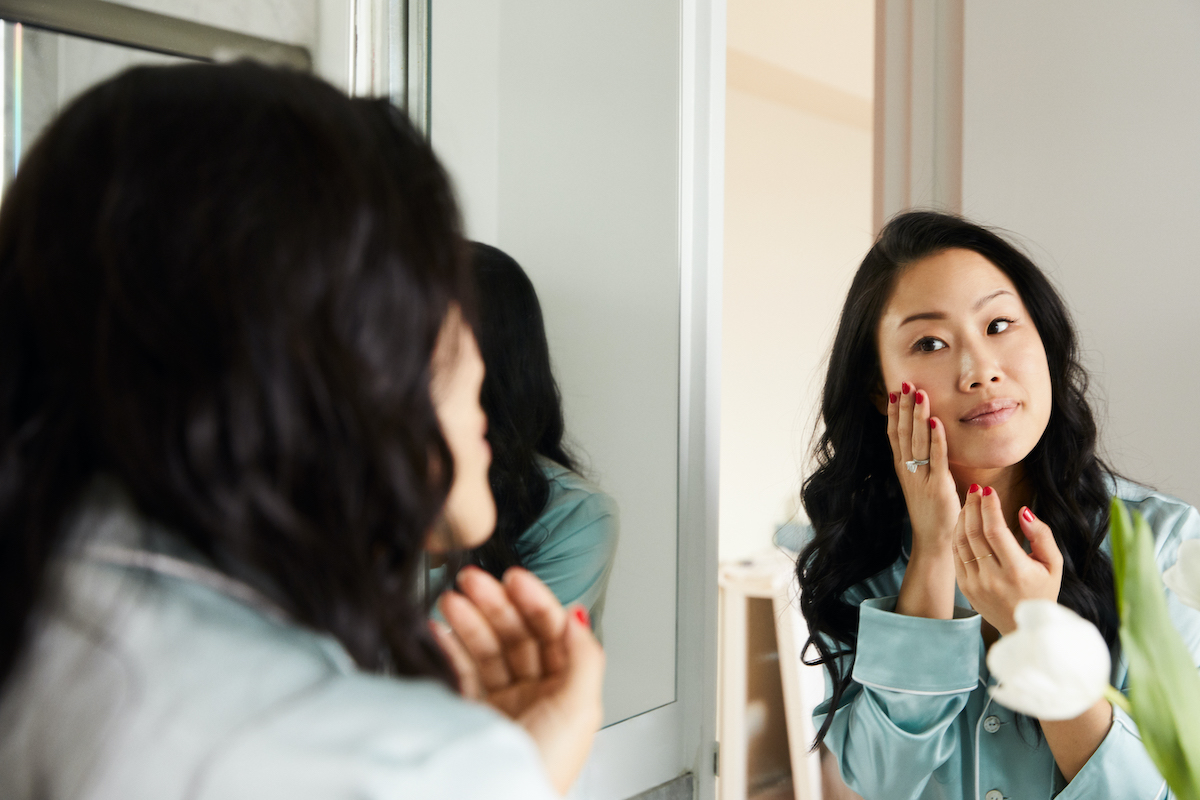Padma Mudra: Gesture of Enlightening From Darkness to Light
Padma Mudra, also known as the Lotus Gesture, is a hand position used in yoga and meditation. The term “Padma” comes from Sanskrit and means “lotus,” a flower that represents purity, growth, and inner beauty. Just as the lotus...

Padma Mudra: Gesture of Enlightening From Darkness to Light
 Image Source: Canva
Image Source: CanvaPadma Mudra, also known as the Lotus Gesture, is a hand position used in yoga and meditation. The term “Padma” comes from Sanskrit and means “lotus,” a flower that represents purity, growth, and inner beauty. Just as the lotus blooms from muddy waters to shine on the surface, Padma Mudra helps us cultivate these qualities in our own lives.
In yoga, mudras are hand gestures that direct “prana,” or vital life force, to enhance our physical and spiritual well-being. By practicing Padma Mudra, you align with the transformative power of the lotus, moving from darkness to light and fostering love, compassion, and personal growth.
Meaning & Significance
In many spiritual traditions, the lotus flower symbolizes a journey from darkness to light. It begins in the mud, rises through the water, and blooms beautifully at the surface. This progression mirrors the spiritual path of overcoming challenges to achieve enlightenment and inner peace.
Padma Mudra mirrors this journey with the hands positioned to resemble a blossoming lotus. Fingers represent the petals, while the heels of the hands form the base of the flower. This gesture evokes a sense of purity and divine beauty, fostering a deeper connection with oneself and the universe.
Significance
Cultivates Compassion and Love: Padma Mudra helps open the heart chakra (Anahata), fostering feelings of love, compassion, and gratitude. It encourages a deeper emotional connection and a more loving approach towards oneself and others. Symbolizes Growth and Purity: Just as the lotus flower rises from the mud to bloom in pure water, this mudra symbolizes the potential for personal growth and spiritual awakening. It reminds practitioners that despite life’s challenges and obstacles, they can emerge purified and renewed. Enhances Emotional Well-being: By practicing Padma Mudra, individuals can promote emotional stability and inner peace. It helps in releasing negative emotions, overcoming fear, and embracing a positive outlook on life. Associates with Goddess Lakshmi: This mudra is often linked to Goddess Lakshmi, who represents wealth, prosperity, and grace. By invoking the qualities of Lakshmi through Padma Mudra, practitioners invite abundance and divine blessings into their lives. Supports Personal Development: The lotus’s growth stages—seed in the mud, bud emerging, and full bloom—symbolize the stages of personal development. Padma Mudra assists in navigating these stages, helping individuals progress from ignorance to enlightenment.How to Do Padma Mudra (Lotus Mudra)
 Image Source: Shutterstock
Image Source: ShutterstockTime & Duration
Best Time: Practice Padma Mudra in the morning between 4 am and 6 am when the brain is at its most receptive. Duration: Aim to practice Padma Mudra for 10 to 15 minutes daily. Frequency: Consistent daily practice is recommended to achieve the best results.Additional Tips
To enhance your Padma Mudra practice, use the mantra “Shrim,” which is associated with Goddess Lakshmi. While holding the mudra, chant “Shrim,” lift your hands from the heart position to above your head, then return to the heart position. Do this for 10-20 rounds. This will help you connect more deeply with yourself and boost the benefits of the mudra.
Padma Mudra Affirmations
Affirmations involve repeating positive statements while practicing a specific gesture.
As you lift your hands above your head, say: “I rise above life’s challenges with ease and grace.” When you open your fingers from Anjali Mudra to Padma Mudra, say: “My inner light shines brightly.” As your hands blossom in Padma Mudra, say: “My heart is pure.”Precautions
Avoid pressing your fingers too firmly together; they should touch lightly without excessive pressure. Ensure a comfortable and relaxed posture by wearing loose, light clothing. Turn off or keep away electronic devices to avoid distractions. Focus on deep, calm breathing to aid concentration and provide sufficient oxygen.Side Effects
Lotus Mudra is generally safe, but excessive practice or improper preparation may cause strain or fatigue in the hands or wrists.
Benefits of Padma Mudra
1. Calms the Anxious Mind: Stress and anxiety are common in today’s world, affecting both mental and physical health. Padma Mudra encourages deep breathing, which helps relax an overactive nervous system. This practice can effectively reduce stress and calm the mind.
2. Helps with Digestive Function: Digestive issues, like acid reflux, constipation, and indigestion, often indicate a weak digestive system. Padma Mudra stimulates the vagus nerve through the fingers, enhancing communication between the digestive organs and the parasympathetic nervous system. This can improve overall digestion and help with conditions like hemorrhoids (swollen veins in the lower rectum).
3. Activates the Anahata Chakra: Padma Mudra channels subtle energy to the heart area, activating and balancing the Anahata (heart) chakra.
4. Enhances Focus: Helps maintain mental clarity and concentration, essential for personal and spiritual development.
This practice promotes feelings of compassion, harmony, purity, bliss, joy, kindness, and love.
Conclusion
Padma Mudra, or the Lotus Gesture, is an effective way to enrich your yoga and meditation practice. It represents the journey from darkness to light and helps develop qualities like purity, compassion, and inner peace. By practicing Padma Mudra regularly, you can improve your emotional well-being, open your heart chakra, and strengthen your connection with yourself. Adding this mudra to your routine can bring positive changes and help you live a more balanced and peaceful life.
About The Author
Ashish
Ashish is a certified Yoga Teacher having experience of teaching at various schools in India. He started learning yoga from renowned yoga schools in the world capital of yoga, Rishikesh. Through his teaching, he realized how Yoga & Ayurveda can be used to increase the longevity and wellness of one's life.

 Tfoso
Tfoso 
































